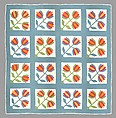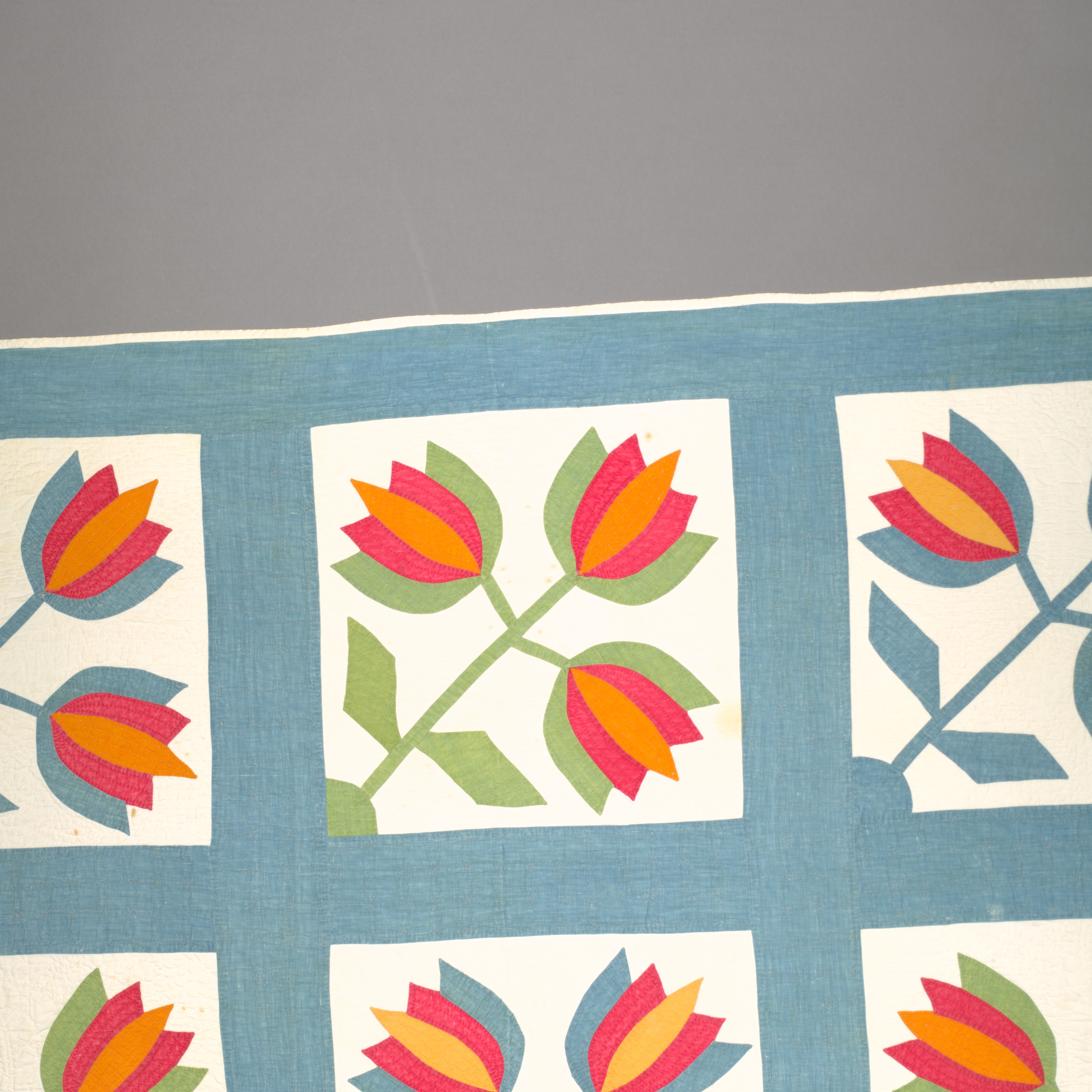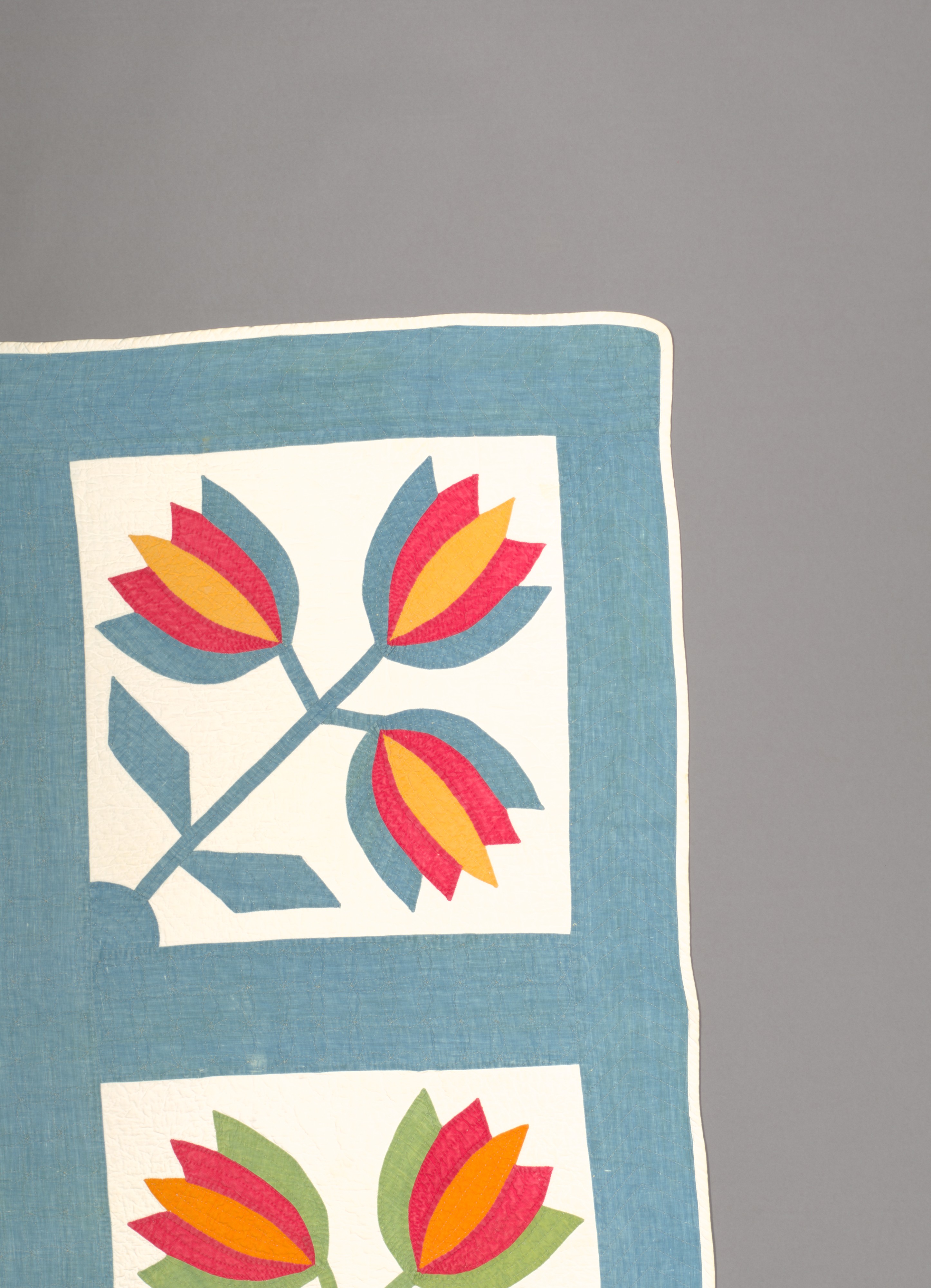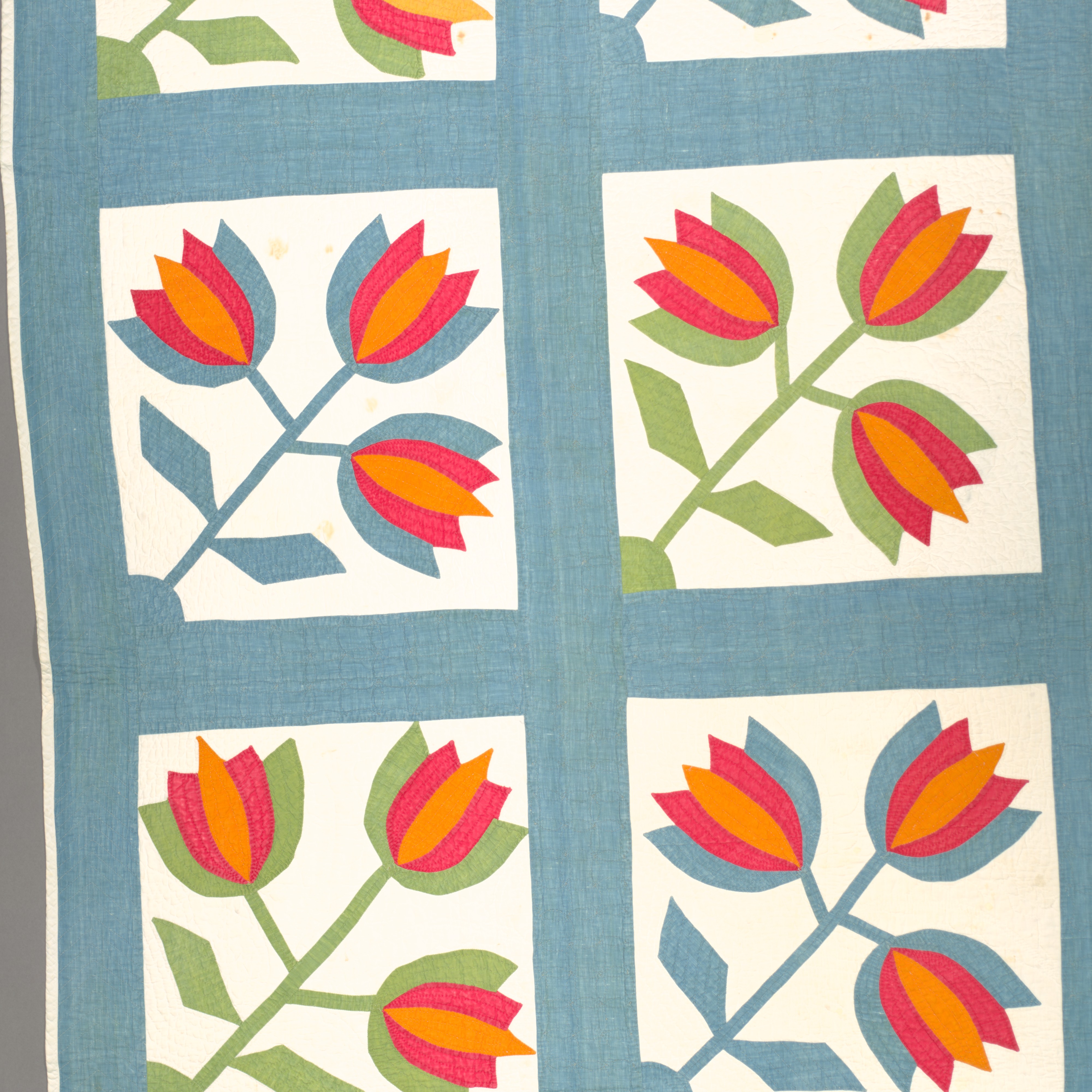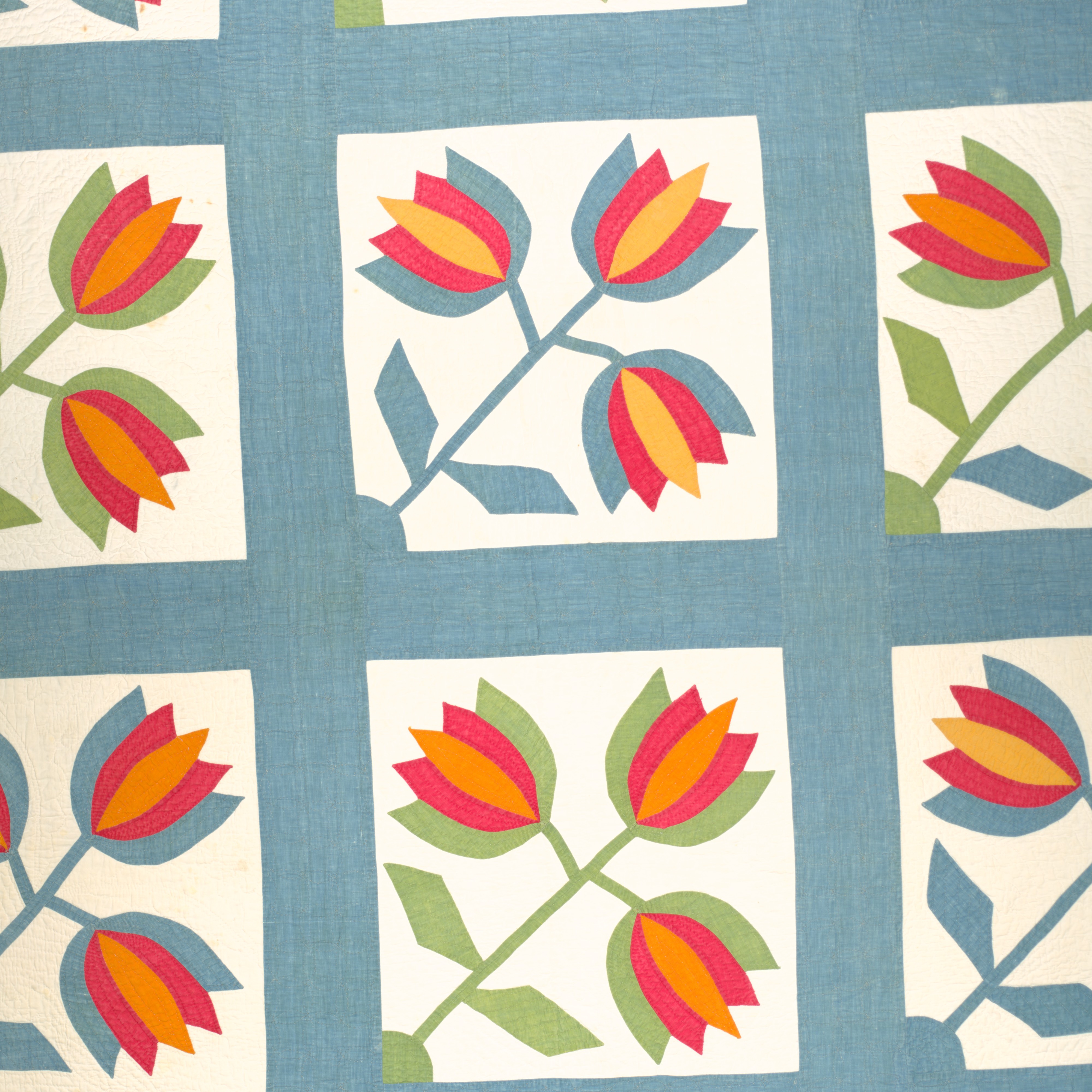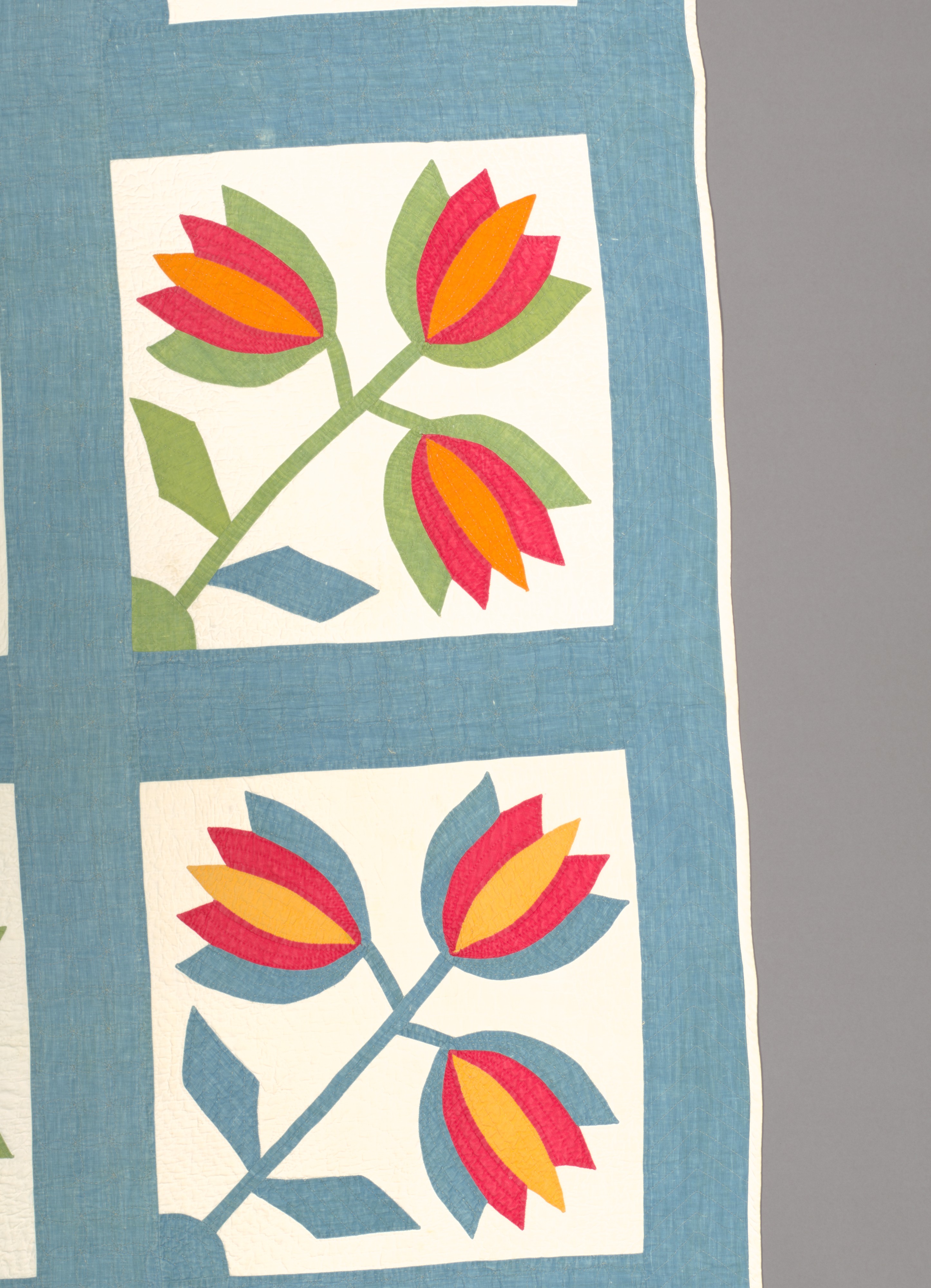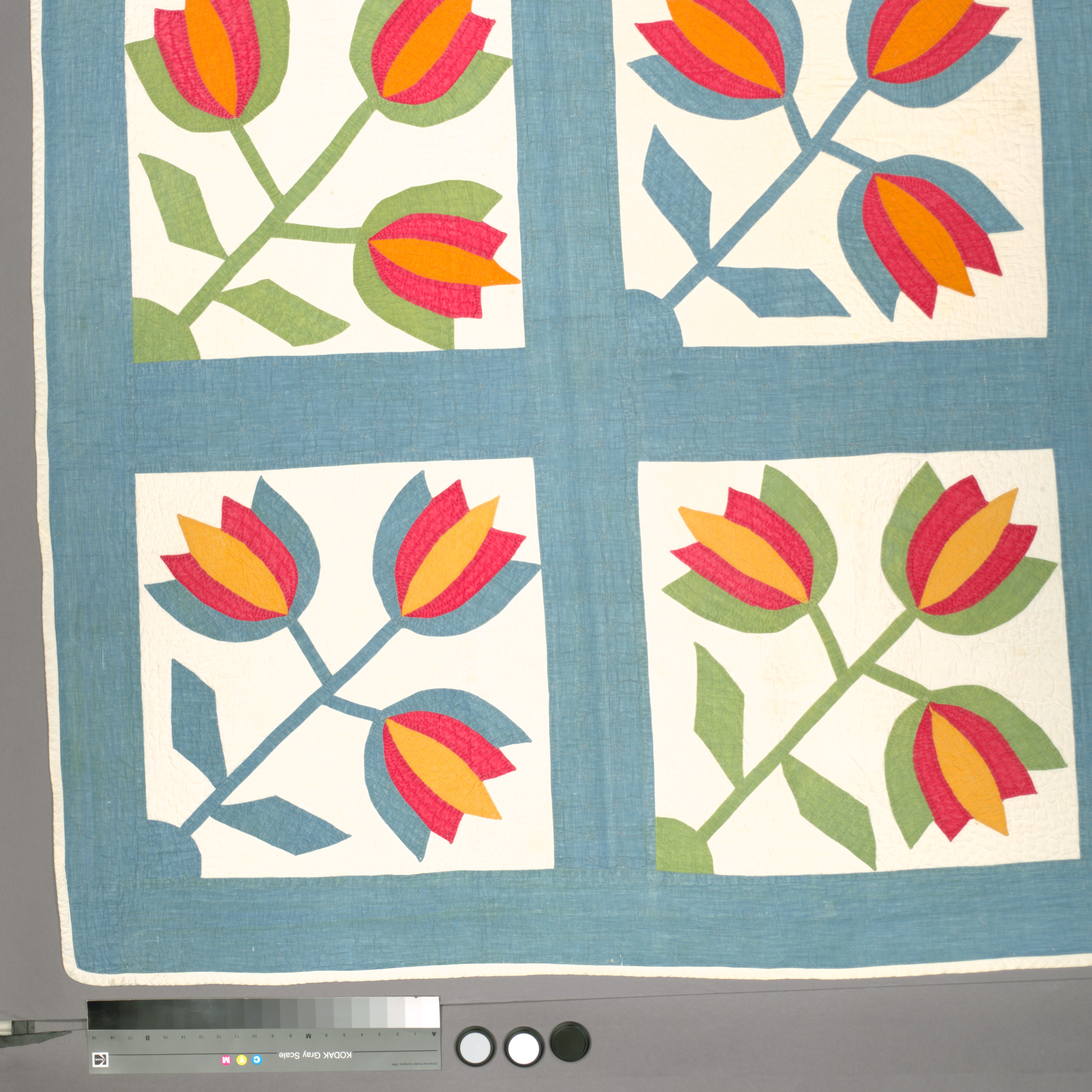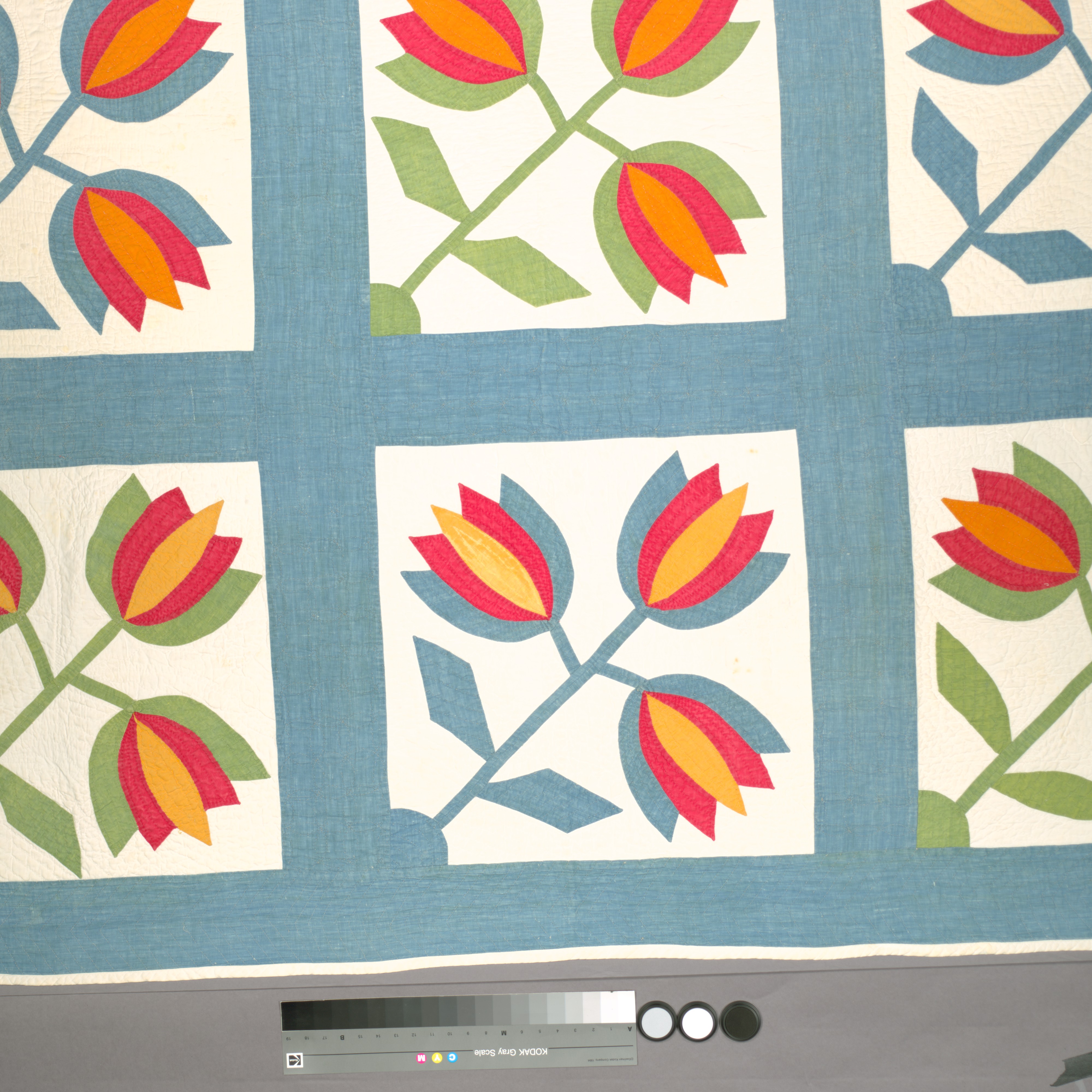Tulip Quilt
Not on view
This quilt, as well two others in the collection (1998.87.1; 1998.87.3), were given to the Museum by Robert E, Cole in memory of his wife, Helen R. Cole, who was an avid quilt collector. From labels remaining on this quilt (and on 1998.87.1) we were able to ascertain that on October 7, 1989, Mrs. Cole brought the two quilts to a "Quilt Discovery Day" held in Chester, New Jersey by The Heritage Quilt Project of New Jersey. They were seeking documented New Jersey quilts in preparation for a book published in 1992 aptly titled "New Jersey Quilts 1777 to 1950."
Beginning as early as the 1600s, New Jersey had a substantial Dutch community, and their traditional crafts clearly influenced New Jersey architecture and material culture. Tulips are the flowers most closely associated with Holland, the country responsible for popularizing the blooms worldwide in the seventeenth century. It is hard to make a direct link between this nineteenth-century tulip pattern and New Jersey's early Dutch settlers, however, because tulips have been a popular motif for quilt makers of all ethnic backgrounds. Many variations of the Tulip design are found in nineteenth-century appliquéd quilts; this particular design, with the appliqued three-flowered tulip plant set on a diagonal in blocks separated by sashing seems to be somewhat unusual.
The alternating green and blue color scheme for each tulip's leaves and stems lends extra appeal to the pattern. The blue fabric of the leaves and sashing could have been a blue-green originally, and the yellow dye that combined with the blue to make the fabric green has faded. The bright orange and yellow centers of the flowers were produced by using chrome dyes, a type of chemical dye first manufactured in the United States in the 1840s. This intensely colored fabric was extremely popular for use in quilts (but not for clothing) in the second half of the nineteenth century.
Due to rights restrictions, this image cannot be enlarged, viewed at full screen, or downloaded.
This artwork is meant to be viewed from right to left. Scroll left to view more.
